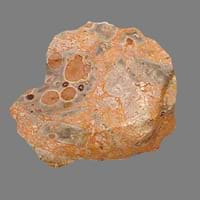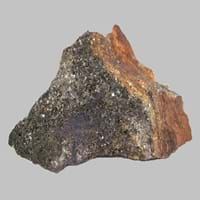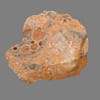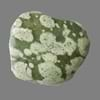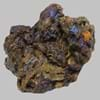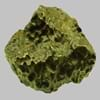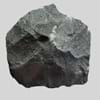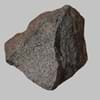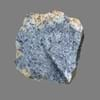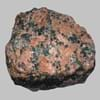Definition
Felsite is a very fine grained volcanic rock that may or may not contain larger crystals and light colored rock that typically requires petrographic examination or chemical analysis for more precise definition
Hornfels is a metamorphic rock formed by the contact between mudstone or other clay rich rock, and a hot igneous body, and represents a heat altered equivalent of the original rock
Origin
Unknown
New Zealand
Discoverer
Unknown
Unknown
Etymology
From English feldspar and -ite
From German which means hornstone
Class
Igneous Rocks
Metamorphic Rocks
Sub-Class
Durable Rock, Medium Hardness Rock
Durable Rock, Soft Rock
Group
Volcanic
Not Applicable
Other Categories
Fine Grained Rock, Opaque Rock
Fine Grained Rock, Opaque Rock
Texture
Arborescent Patterned, Vitreous
Granular, Platy
Color
Black, Blue, Brown, Green, Orange, Red, Tan, Yellow
Brown, Dark Greenish - Grey, Green, Reddish Brown
Durability
Durable
Durable
Appearance
Layered, Banded, Veined and Shiny
Dull
Interior Uses
Decorative Aggregates, Flooring, Interior Decoration
Decorative Aggregates, Flooring, Homes, Interior Decoration
Exterior Uses
Paving Stone, Garden Decoration
As Building Stone, As Facing Stone, Garden Decoration, Office Buildings, Paving Stone
Other Architectural Uses
Curbing
Curbing
Construction Industry
Arrowheads, Cutting Tool, Knives, Scrapers, Spear Points
for Road Aggregate, Roadstone
Medical Industry
Surgery
Not Yet Used
Antiquity Uses
Artifacts
Artifacts, Monuments
Commercial Uses
Mirror, Jewelry
Cemetery Markers, Commemorative Tablets, Creating Artwork
Types
Not Available
Biotite hornfels
Features
Available in Lots of Colors and Patterns, Clasts are smooth to touch, Splintery, Very fine grained rock
Smooth to touch
Archaeological Significance
Monuments
Not Yet Used
Used
Famous Monuments
Not Applicable
Data Not Available
Sculpture
Not Yet Used
Not Yet Used
Famous Sculptures
Not Applicable
Not Applicable
Figurines
Not Yet Used
Not Yet Used
Formation
Felsite is a fine-grained, hard rock which is a type of metasomatite, essentially altered basalt. It forms with or without crystallization, either below the surface as intrusive rocks or on the surface as extrusive rocks.
Due to change in environmental conditions, rocks are heated and pressurized deep inside the Earth's surface. Hornfels is formed from the extreme heat caused by magma or by the intense collisions and friction of tectonic plates.
Mineral Content
Feldspar, Iron Oxides
Andalusite
Compound Content
Aluminium Oxide, CaO, Iron(III) Oxide, FeO, Potassium Oxide, MgO, MnO, Sodium Oxide, Phosphorus Pentoxide, Silicon Dioxide, Titanium Dioxide
Fe, Mg
Types of Metamorphism
Burial Metamorphism, Contact Metamorphism, Impact Metamorphism, Regional Metamorphism
Not Applicable
Types of Weathering
Biological Weathering, Chemical Weathering, Mechanical Weathering
Biological Weathering
Types of Erosion
Chemical Erosion, Glacier Erosion, Water Erosion
Chemical Erosion, Glacier Erosion, Sea Erosion, Water Erosion, Wind Erosion
Grain Size
Fine Grained
Fine Grained
Fracture
Conchoidal
Conchoidal
Porosity
Very Less Porous
Highly Porous
Cleavage
Non-Existent
Perfect
Toughness
Not Available
Not Yet Found
Specific Gravity
2.6-2.7
3.4-3.9
Transparency
Translucent
Opaque
Density
2.6 g/cm3
0.25-0.30 g/cm3
Resistance
Heat Resistant, Impact Resistant
Heat Resistant, Impact Resistant, Pressure Resistant
Deposits in Eastern Continents
Asia
Afghanistan, Indonesia, Japan, Russia
Bangladesh, Bhutan, China, India, North Korea, Qatar, Russia, Saudi Arabia, South Korea, Thailand
Africa
Kenya
Cameroon, East Africa, Tanzania, Western Africa
Europe
Greece, Hungary, Iceland, Italy, Turkey
United Kingdom
Others
Not Yet Found
Not Yet Found
Deposits in Western Continents
North America
Canada, Mexico, USA
Canada, USA
South America
Argentina, Chile, Ecuador, Peru
Bolivia, Brazil, Colombia, Ecuador
Deposits in Oceania Continent
Australia
New Zealand
New South Wales, New Zealand, Queensland, Western Australia
All about Felsite and Hornfels Properties
Know all about Felsite and Hornfels properties here. All properties of rocks are important as they define the type of rock and its application. Felsite belongs to Igneous Rocks while Hornfels belongs to Metamorphic Rocks.Texture of Felsite is Arborescent Patterned, Vitreous whereas that of Hornfels is Granular, Platy. Felsite appears Layered, Banded, Veined and Shiny and Hornfels appears Dull. The luster of Felsite is vitreous while that of Hornfels is shiny. Felsite is available in black, blue, brown, green, orange, red, tan, yellow colors whereas Hornfels is available in brown, dark greenish - grey, green, reddish brown colors. The commercial uses of Felsite are mirror, jewelry and that of Hornfels are cemetery markers, commemorative tablets, creating artwork.
